在长达一小时的漫无边际的新闻发布会上,特朗普反复提到美国在修建运河时做出的牺牲,并错误地指责中国今天运营该运河。当被问及他是否会命令军队强迫巴拿马放弃格陵兰岛(这违反了卡特政府时期达成的条约和其他协议)或对格陵兰岛采取同样的行动时,他说:“不,我无法保证这两者中的任何一个。”
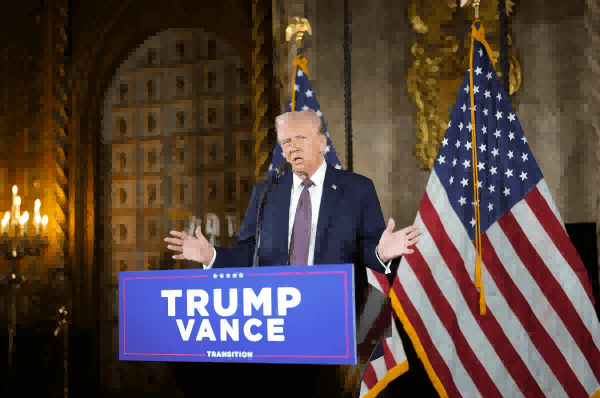
“我们需要它们来保障经济安全——巴拿马运河是为我们的军队修建的,”他说。当再次被问及他是否会排除使用军事力量时,他说:“我不会承诺这样做。你可能不得不做点什么。”
特朗普的言论推动了他一再呼吁将美国领土扩大到新水平的呼吁,这必将激怒三个美国盟友——巴拿马、负责格陵兰岛外交和安全事务的丹麦以及他嘲笑为美国“第 51 个州”的加拿大。不过,周二他明确表示,他不是在开玩笑,他暗示如果加拿大仍然是一个主权国家,其与美国的贸易关系的财务成本可能会是毁灭性的。
也许特朗普是在摆姿态,以求在谈判中占得先机。然而,自从威廉·麦金莱(William McKinley)时代以来,美国还没有一位当选总统如此公然地威胁使用武力扩大该国的领土边界。麦金莱于 19 世纪末参与了美西战争,最终控制了菲律宾、关岛和波多黎各。
这提醒我们,特朗普对“美国优先”的定义绝不是孤立主义。他以房地产开发商的心态来制定美国外交政策,热衷于抢占领土。
他坚称,他不会因与巴拿马签署的条约而受到阻碍,该条约于 1978 年以 68 票对 32 票获得参议院批准,略高于宪法规定的三分之二多数票。他坚称将运河控制权归还巴拿马是个坏主意——他辩称,在全国正在埋葬谈判这项协议的前总统吉米·卡特时,他不愿意这么说。然后,他又反复批评卡特的判断。
“他是个非常好的人,”特朗普说。“但那是一个大错误,”他补充道。“它让我们损失了相当于一万亿美元的代价。”
在加拿大问题上,特朗普在压力之下威胁要使用“经济力量”而不是军事力量,让加拿大和美国联合起来,这意味着美国将减少对加拿大产品的购买。
他宣布将使用关税来阻碍加拿大组装汽车并在美国销售的能力,然后指责加拿大对美国国防的贡献不足。他没有提到北美防空司令部,这是美国和加拿大联合防御的努力,被认为是一个可互操作的联合军事预警系统的军事典范,由两个盟友平等管理。它是美国防空和导弹防御的核心。
周二晚上,特朗普继续推动此事,在社交媒体上发布地图,显示加拿大是美国的一部分。
他还表示,如果丹麦不将格陵兰岛交给美国,他将“对丹麦征收高额关税”,随后他质疑丹麦对格陵兰岛的主权是否合法。
这些威胁可能含糊不清,也未成形,但只是特朗普在不到两周内就任总统后所作计划的一系列声明的一部分。他说,墨西哥湾将更名为“美国湾”,但目前尚不清楚他对这一努力有多认真。
他宣称,北约成员国迟迟未能履行将其国内生产总值 2% 用于国防的承诺,现在应该为需要花费 5% 国防开支的世界做好准备。
“他们都负担得起,但应该是 5%,而不是 2%”,他再次威胁说,如果北约盟友在他看来没有向该系统支付足够的费用,他将不会为其辩护。俄罗斯总统弗拉基米尔·普京过去曾利用这种威胁在北约内部挑起分裂,尽管北约帮助武装了乌克兰,但他一直不愿直接与北约对抗。
特朗普对北约的批评并不是唯一的:乔治·W·布什、巴拉克·奥巴马和乔·拜登总统都曾提出这一要求,在实现 2% 目标方面取得的最大进展是在拜登任期内,他在 7 月北约成立 75 周年之际的华盛顿北约峰会上庆祝了这一进展。
甚至一些欧洲领导人在私下交谈时也表示,他们同意,如果欧洲希望在未来几十年内建立军事力量来威慑俄罗斯,那么目标应该提高到 3%。他们经常补充说,没有政治选民会支持这种程度的支出。
但如果他们确信美国不会向他们提供援助,他们可能会被迫这么做。特朗普告诉记者:“我本来很想说,即使你不付钱,我们也会保护你,但生活不是这样的。”
特朗普还重申了他的威胁,如果哈马斯在加沙地带扣押的人质在就职日之前得不到释放,“中东将陷入混乱”,他重复了四次这一威胁。
但特朗普对美国领土扩张主义的看法在新闻发布会上最为引人注目,而且与国际法毫无关联。
去年 12 月,当特朗普加大购买格陵兰岛的呼吁力度,并抱怨美国船只在穿越巴拿马运河时受到的待遇时,欧亚集团的伊恩·布雷默指出,特朗普的辩解与普京入侵乌克兰的理由如出一辙。
但将特朗普在社交媒体上发布的一系列有关这些问题的帖子拼凑起来,并听听他在佛罗里达州私人俱乐部海湖庄园的抱怨,有一点很清楚:他正在为美国接管格陵兰岛和巴拿马运河区建立国家安全理由。
他周二指出,中国和俄罗斯的船只出现在格陵兰岛周围,这显然表明,在全球变暖导致冰原松动和缩小、更易于通行后,这些国家对较短的极地航运和军事路线的兴趣日益浓厚。他认为,控制着运河附近两个港口的中国正在运营运河本身,但事实并非如此。
特朗普周一在社交媒体上发文回应加拿大总理贾斯汀·特鲁多的辞职,称“加拿大很多人都喜欢成为第 51 个州”,布雷默在社交平台 X 上发文称“美帝国主义又回来了”。
事实上,在新闻发布会上,特朗普驳斥了丹麦领导层关于格陵兰岛不出售的声明,以及巴拿马的类似言论,这听起来经常是这样的。现在唯一的问题是,他是否在为谈判目的而加大压力,还是真的会兑现他的威胁。
本文最初发表于《纽约时报》。
题图:当选总统唐纳德·特朗普于 1 月 7 日在佛罗里达州棕榈滩的海湖庄园举行的新闻发布会上发表讲话。DOUG MILLS/NYT
附原英文报道:
Trump floats using force to take Greenland and the Panama Canal
By David E. Sanger and Michael D. Shear New York Times,Updated January 8, 2025
President-elect Donald Trump speaks during a news conference at his Mar-a-Lago club in Palm Beach, Fla., on Jan. 7.DOUG MILLS/NYT
President-elect Donald Trump refused on Tuesday to rule out the use of military or economic coercion to force Panama to give up control of the canal that America built more than a century ago and to push Denmark to sell Greenland to the United States.
In a rambling, hourlong news conference, Trump repeatedly returned to the theme of American sacrifice in building the canal and accused China, falsely, of operating it today. When pressed on the question of whether he might order the military to force Panama to give it up — in violation of treaties and other agreements reached during the Carter administration — or to do the same with Greenland, he said: “No, I can’t assure you on either of those two.”
“We need them for economic security — the Panama Canal was built for our military,” he said. Asked again if he would rule out the use of military force, he said: “I’m not going to commit to that. You might have to do something.”
Trump’s statements propelled his repeated calls for expanding U.S. territory to a new level, one that is bound to roil three American allies — Panama; Denmark, which handles Greenland’s foreign and security affairs; and Canada, which he has mocked as America’s “51st state.” On Tuesday he made clear, though, that he was not joking, suggesting that if Canada remained a sovereign state, the financial cost to its trading relationship with the United States could be crushing.
Perhaps Trump was posturing, for negotiating advantage. Yet not since the days of William McKinley, who engaged in the Spanish-American War in the late 19th century and ended up with U.S. control of the Philippines, Guam and Puerto Rico, has a U.S. president-elect so blatantly threatened the use of force to expand the country’s territorial boundaries.
It was a reminder that Trump’s definition of “America First” is anything but isolationist. He comes to U.S. foreign policy with the mind of a real estate developer, with a penchant for grabbing territory.
He insisted he would not be deterred by the treaty signed with Panama, which was ratified by the Senate in 1978 by a 68-32 vote, just beyond the two-thirds majority required by the Constitution. He asserted that the return of control of the canal to Panama was a bad idea — arguing that he was reluctant to say so while the nation was burying former President Jimmy Carter, who negotiated the deal. He then returned, repeatedly, to criticizing Carter’s judgment.
“He was a very fine person,” Trump said. “But that was a big mistake,” he added. “It cost us the equivalent of a trillion dollars.”
On Canada, Trump, when pressed, threatened to use “economic force,” not the military, to join Canada and the United States together, implying that the United States would pare back its purchases of Canadian products.
He declared he would use tariffs to hamper Canada’s ability to assemble cars and sell them in the United States, and then charged that Canada contributed insufficiently to U.S. defense. He made no reference to NORAD, the combined American and Canadian defensive effort that is considered a military model for an interoperable, joint military early-warning system, run equally by two allies. It is at the core of U.S. air and missile defense.
He continued his push on Tuesday evening, posting maps on social media showing Canada as part of the United States.
He also said at the news conference he would “tariff Denmark at a very high level” if it did not give Greenland to the United States, before casting doubt on whether Denmark has a legitimate claim to Greenland at all.
The threats, vague and unformed as they may be, were only part of the series of declarations Trump made about his plans when he takes office in less than two weeks. He said the Gulf of Mexico would be renamed “the Gulf of America,” though it was unclear how serious he was about the effort.
He declared that members of NATO, who were slow to fulfill a commitment to spend 2% of their gross domestic product on defense, should now prepare for a world in which they needed to spend 5%.
“They can all afford it, but they should be at 5%, not 2%,” he said, before again threatening to not defend any NATO ally who did not, in his view, pay into the system sufficiently. Russian President Vladimir Putin has used such threats in the past to sow divisions within NATO, an alliance he has been loath to take on directly even as it helps arm Ukraine.
Trump’s critique of NATO isn’t a solitary one: Presidents George W. Bush, Barack Obama and Joe Biden have all pressed the case, and the most progress in meeting the 2% goal has come in Biden’s term, a fact he celebrated at the NATO summit in Washington in July during the 75th anniversary of the alliance.
And even some European leaders, when speaking privately, say they agree that the goal should be moved to 3% if Europe is going to have any hope of assembling the military might to deter Russia in coming decades. They often add that there is no political constituency for spending at that level.
But they may be driven there by necessity if they become convinced that the United States will not come to their aid. “I would have loved to say yes, we’ll protect you even if you don’t pay, but that not the way life works,” Trump told reporters.
Trump also reiterated his threat that “all hell will break out in the Middle East” if the hostages being held by Hamas in the Gaza Strip are not released by Inauguration Day, repeating the threat four times.
But it was Trump’s views on U.S. territorial expansionism that were most striking in the news conference, and so untethered from international law.
In December, when Trump ramped up his calls for the purchase of Greenland and voiced his complaints about how U.S. shipping was treated as it traversed the Panama Canal, Ian Bremmer of the Eurasia Group noted that the case Trump was making had echoes of the justifications Putin made for invading Ukraine.
But piecing together Trump’s series of social media posts on these issues, and hearing his complaints at his private Florida club, Mar-a-Lago, one thing is clear: He is building a national security case for why a U.S. takeover of Greenland and the Panama Canal Zone is necessary.
He noted Tuesday that Chinese and Russian ships were appearing around Greenland, an apparent showing of the countries’ growing interest in shorter polar shipping and military routes after global warming loosened and shrank ice fields, making them more passable. He argued that China, which controls two ports near the canal, was operating the canal itself; it is not.
After Trump responded to the resignation of Prime Minister Justin Trudeau on Monday by writing on social media that “many people in Canada LOVE being the 51st State,” Bremmer noted in a post on the social platform X that “American imperialism is so back.”
In fact, it often sounded that way at the news conference, as Trump dismissed the declarations of Denmark’s leadership that Greenland is not up for sale, and similar comments from Panama. The only question now is whether he is increasing the pressure for negotiating purposes, or would actually make good on his threats.
This article originally appeared in The New York Times.
声明:该文观点仅代表作者本人,中加头条系信息发布平台,我们仅提供信息存储空间服务。







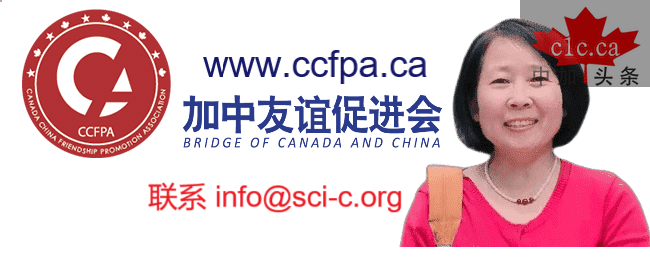
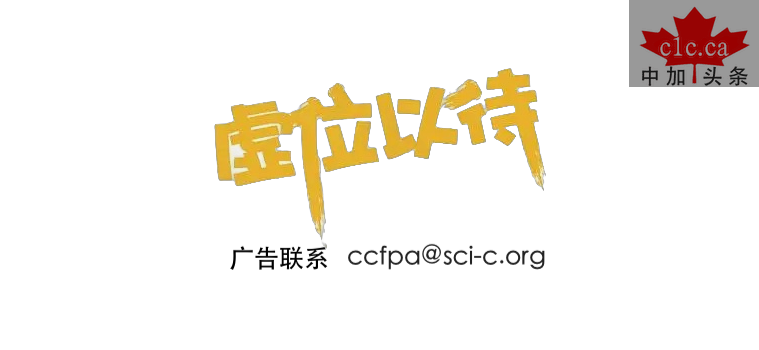
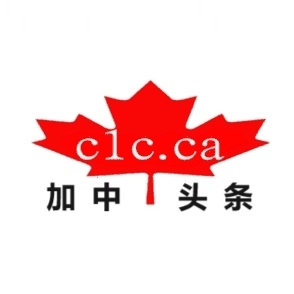

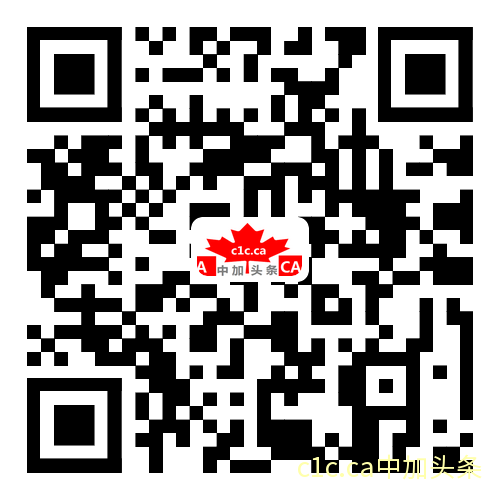
发表评论 取消回复